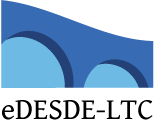home > eDESDE-LTC TOOLKIT > eDESDE-LTC Coding and Classification System > Glossary
GLOSSARY
# | A | B | C | D | E | F | G | H | I | J | K | L | M | N | O | P | Q | R | S | T | U | V | W | X | Y | Z
Secondary care (Health)
Care provided by health professional specialists (physicians, psychologists, nurses) outside primary care and hospital premises. In many countries these specialists generally do not have first contact with patients. Secondary care is usually delivered in outpatient clinics. In the public sector patients are usually referred to secondary care by their primary care provider (usually their GP). Secondary care does not generally include in the current definition outpatient care provided in hospital settings.
Semantic interoperability
Ability of two or more computer systems to exchange information and have the meaning of that information automatically interpreted by the receiving system accurately enough to produce useful results, as defined by the end users of both systems.
Service
A ‘service’ is a micro-level functional system of care organisation, defined as the smallest unit with own administrative structure available within the catchment area (micro-organisation). The range of services to be considered includes those facilities that have as specific aim any aspect of the management of long term care and of the clinical and social difficulties related to it.
Service inventory (Catalogue, service listing)
It allows a detailed description of individual services for LTC, obtaining the main characteristics of every service (service listing, service directory or service catalogue).
Setting
Physical location of the care provision (facility).
Small Care Area
A catchment area or territorial sector with a common set of services for its population. It provides the meso-level of comparison in service research.
Social Care
Care provision for a particular health condition non-directly related to health, crime & justice or education.
Specialised care
Services for a specific subgroup within the target population attended at the catchment area (e.g. services for Elderly persons with Alzheimer’s disease within the “E” group, or services for Eating Disorders within the “MD” group).
Status of user
Level related to the clinical status of the users who are attended in the care setting (i.e. whether there is a crisis situation or not).
Support (24-hour)
Staff is present within the facility 24 hours a day, with responsibilities relating to the monitoring and clinical and social care of the patient (i.e. domestic or security staff is not included).
Support (daily)
Members of staff regularly on site at least five days a week for some part of the day, with responsibilities related to the monitoring and clinical and social care of the patient.
Support (lower)
Facilities where the patient resides for some purpose related to the management of his/her condition and where there is a direct link between residing in the facility and some support from staff, but where staff is regularly present fewer than five days per week.
# | A | B | C | D | E | F | G | H | I | J | K | L | M | N | O | P | Q | R | S | T | U | V | W | X | Y | Z
NEWS & EVENTS
2012-09-25
Refinement Project - Summary
Summary of the REFINEMENT project. Presents the aim, objectives and expected results of the project funded under EU European Union Seventh Framework P...more
2011-12-05
Training courses on ESMS/DESDE coding
Two training courses on ESMS/DESDE coding were took place between 29 November and 2 December. The first in Verona, Italy and the second in Helsinki, F...more
 |

The eDESDE-LTC Coding and Classification System, eDESDE-LTC Instrument, eDESDE-LTC Training Package and eDESDE-LTC website by eDESDE-LTC Consortium are licensed under a Creative Commons Attribution-NonCommercial-ShareAlike 3.0 Unported License
